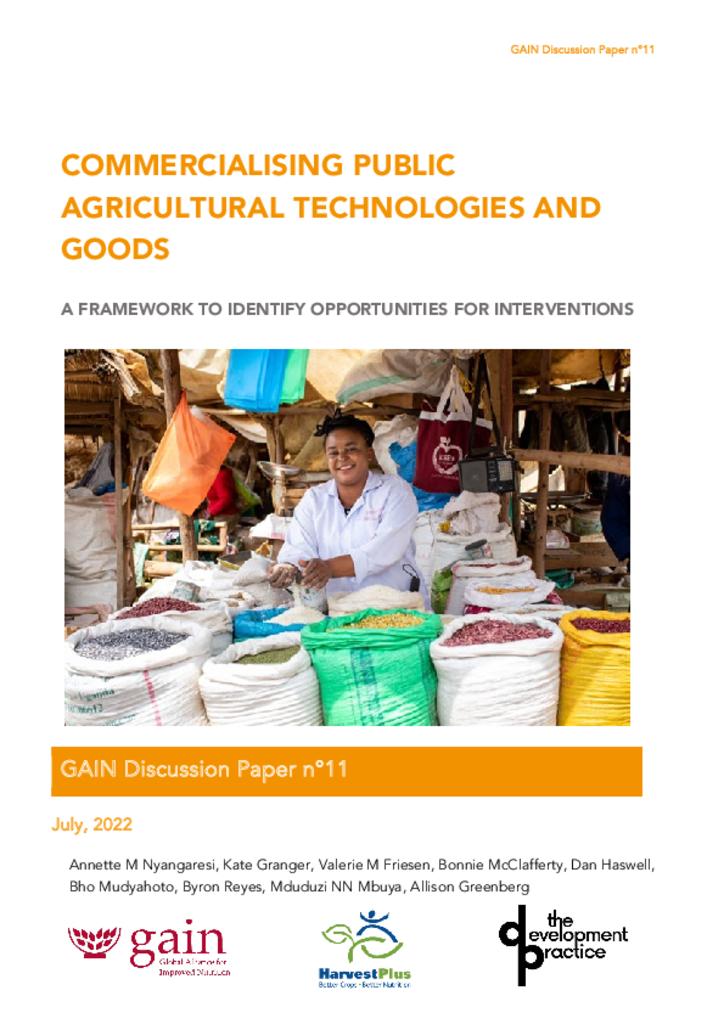Commercialisation (i.e., the process of introducing a new product or technology into commerce or making it available in the market) is considered a promising strategy to scale up the consumption of biofortified foods. To inform the development of effective commercialisation strategies, a systematic assessment of country- and crop-specific value chains is essential to identify success factors, barriers, and opportunities. Tools, such as commercialisation frameworks, that can be used to systematically synthesise and analyse such information have been developed but vary widely across different value chains and sectors. A commercialisation framework specific for public agricultural technologies and goods was recently developed. In this paper, we summarise the process of developing that commercialisation framework and its finding, and discuss its implications for, and application in, efforts to scale up biofortified foods.
The commercialisation framework for agricultural and publicly developed technologies and goods is made up of both a commercialisation process map and cross-cutting success factors (i.e., supply, demand, policy, finance, and development outcomes), and looks at profitability using a commercialisation framework process wheel. As such, it offers two complementary dimensions (placing profitability at the centre) for identifying bottlenecks and accelerators and can be used to identify where interventions can maximise impact. Case studies on fortified wheat flour in the United States and vitamin A-biofortified cassava in Nigeria were used to illustrate how the framework can be used to synthesise and organise the different information about a food product value chain and subsequently analyse it to inform commercialisation strategy decisions.
